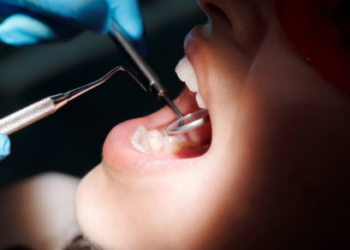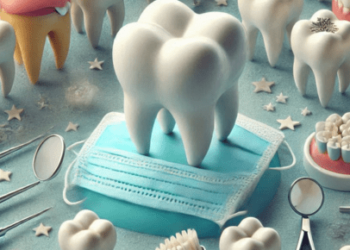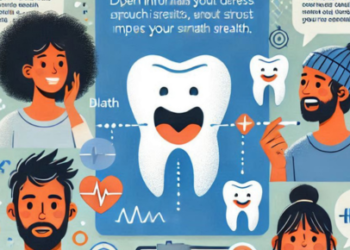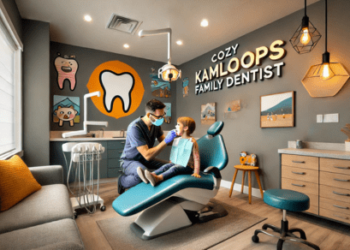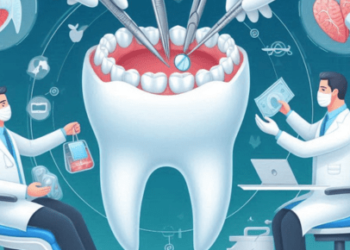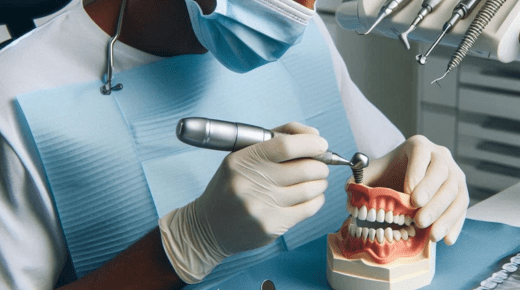
Implant dentistry, as an advanced dental restoration technique, is widely regarded as the optimal solution for tooth loss due to its ability to provide chewing efficiency close to natural teeth, restore oral aesthetics and functionality, and significantly enhance patients’ quality of life. This treatment process is not only delicate and complex but also highly personalized, often requiring close collaboration among oral and maxillofacial surgeons, prosthodontists, and periodontists. Implant dentistry restoration allows people to fully enjoy delicious food and life. Therefore, it is hailed as the best restoration option for tooth loss. So, what is the process of getting dental implants? Below, Best Practices China Dental Lab shares this procedure to alleviate your fear of dental implants stemming from lack of understanding.
- Initially, a panoramic dental X-ray and jaw CT are taken to examine the specific oral condition, including inflammation, alveolar bone resorption, etc. Then, the dentist will inquire about the patient’s medical history, and blood tests, such as complete blood count, bleeding and coagulation time, blood pressure, blood glucose, hepatitis B five-item test, and pulse, may be required. Only after confirming that the patient is suitable for surgery will the diagnosis, impression-taking, and formulation of the implant plan proceed. (The first visit typically takes about an hour and a half.)
- The dental implant surgery officially begins. A hole is prepared in the alveolar bone to insert the artificial implant. The bone bed is then tightly sutured, and the sutures can be removed approximately a week later. This phase lasts from about two and a half to three months.
- A waiting period for osseointegration follows. (The duration of this period varies among individuals and depends on the implant system used. Some individuals or implant systems may require two to three months, while others may need over six months.)
- A healing abutment is installed to allow the implant to protrude through the gingiva and wait for soft tissue formation.
- Approximately two to three weeks after soft tissue formation, the dentist replaces the healing abutment with a permanent abutment.
- The dental implant crown is placed.
- After completion, regular check-ups at the hospital are recommended twice a year.
The aforementioned steps constitute the entire dental implant procedure. Throughout this process, Efficient China Dental Laboratory provides the production of abutments and crowns for dental implants. Close collaboration between the medical team and the Dental Lab team is essential for achieving perfect implant restoration.
Advantages of Dental Implants
Dental implants offer numerous other benefits. They do not require adjacent teeth to be worn down, thereby avoiding potential tooth damage associated with traditional restoration methods. Moreover, dental implants exhibit exceptional stability and durability, maintaining a stable oral environment for a long time. These advantages make dental implants the preferred restoration option for an increasing number of patients with tooth loss. Currently, implant dental labs in China produce a significant portion of dental implants worldwide.
- Strong Functionality: Dental implants can effectively restore tooth functionality, with chewing efficiency significantly superior to other traditional dentures.
- No Adjacent Tooth Wear: Relying on its own artificial root for restoration, dental implants do not require grinding adjacent healthy teeth, causing no harm to them.
- Excellent Retention: Without using traditional denture clasps or retainers, the artificial root tightly bound with the alveolar bone, taking root in the bone like natural teeth, exhibiting strong retention and stability.
- Aesthetic Appeal: Custom-made crowns can be fabricated based on the patient’s face shape and the shape and color of other teeth, achieving optimal overall coordination and aesthetics.
- Comfort and Convenience: Without the need for denture bases and clasps, dental implants provide a sense of comfort and convenience, facilitating oral hygiene and cleanliness.
- Simple Procedure: Dental implant surgery is a minor alveolar surgical procedure similar to tooth extraction, using local anesthesia. With minimal trauma, patients can eat immediately after surgery, experiencing little pain. Generally, implant placement surgery takes only tens of minutes to a few hours to complete. Since biocompatible materials are selected, dental implants have no adverse side effects on the human body. If osseointegration fails, meaning the implant is unsuccessful, it can be removed, and the bone can heal before another implant is attempted or an alternative restoration method is used.


